We have discussed the evolution of websites over the years, with basic HTML sites taking centre stage in the 1990s, and then advancing to sleek and sophisticated content management systems (CMS) in the 2000s with platforms like WordPress leading the charge.
This progression was an immense leap forward, but are we at the start of an even greater leap forward in the web design space, made possible by artificial intelligence? Could this signal the death of web design as we know it, or something else?
“Adapt or get left behind” has been stated repeatedly in the tech and service-based industries, but today, where AI is infiltrating every industry and art-form, it’s truer than ever before.
As AI grows in popularity, so does the desire for genuinely human-made hand-crafted art, design, and content. Think of it this way: Over the years, has the mass production of cheap products using cheap materials signalled the end for high-quality products or services? Of course not. Some people flock to more affordable products, but that doesn’t remove the need for premium products or services. We may be entering a time where, much like in the physical world, the mass production of digitally-generated content exists alongside hand-crafted bespoke products and services.
If you are a web designer or content creator, the change posed by AI doesn’t signal the end; it signals opportunity. There’s a real hunger for human creativity and non-automated experiences, just as there is for AI-driven services. It’s important not to throw the baby out with the bathwater; AI is a valuable tool that can supplement a web development team’s workflow, and yes, it can create entire websites, but it’s not going to replace the human touch needed for creating truly unique digital solutions and experiences.
Is web design dead in the age of AI?
Here we answer whether the recent popularity of AI tools and algorithms signal the end of web design and web development? No. It’s quite the opposite.
It’s best to think of AI is a tool, a really powerful tool, but like all tools, it needs to be leveraged correctly by the user to get the most out of it. Sure, some web design and web development teams will rely solely on AI to make mockups and even full designs, but there’s no replacement for human creativity. AI tools like ChatGPT, Google Gemini and Anthropic Claude are based on statistical pattern recognition. They don’t “understand” code in the way humans do; instead, they predict the most likely next token (word or symbol) based on the context they’ve seen.
For example, when prompted with something like below (don’t worry, you don’t need to understand what this means):
function calculateTotalPrice (price, quantity) { return…
A model like ChatGPT looks at its training data and predicts that price * quantity; } is statistically the most likely next segment.
So in that sense, they’re essentially just pattern recognition systems. This is exactly how they work when creating written content as well.
As good as models like GPT-4o, Sonnet 4.0 and Gemini 2.5 Pro are at coding, they are no replacement for specialist web design teams that have acquired years of experience working on real projects, crafting and fine-tuning their skills in understanding the nuances of human expectations, requirements analysis and creative delivery.
At Opace, when we provide web design services to clients, we make a considerable effort to understand their wants, needs, expectations, and capabilities. Being able to translate these into a successful solution comes with decades of experience. Brand identity and messaging through design are crucial components of the process.
Websites shouldn’t be a one-size-fits-all situation, so understanding how we can work with clients to achieve their goals through a human-led process always creates better results. We (or any other team) cannot replicate this with AI; it requires intricate details about each client’s goals and unique requirements, including an appreciation of the things that are said and unsaid.
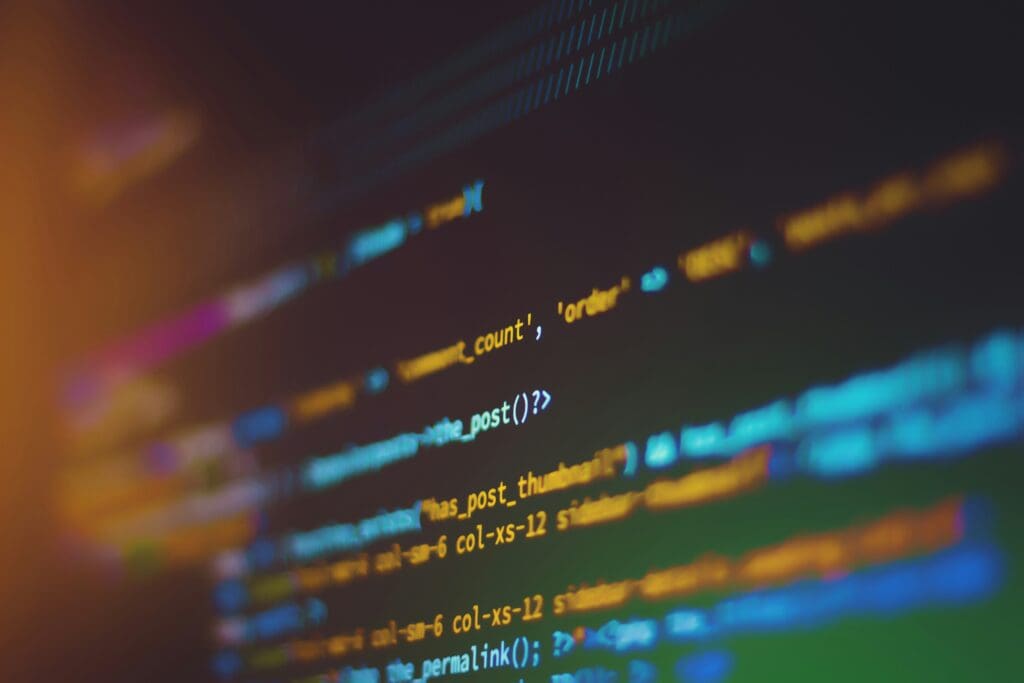
AI is a great tool for debugging and optimising code. Photo by Shahadat Rahman on Unsplash
How is AI changing web design?
Two key deliverables are needed when creating websites: design and coding. It’s more complex than this in reality as there are many other aspects that go into building a successful website, like requirements gathering, analysis, project management, content creation, and marketing, but lets start with the design and the code.
Web development teams typically handle the functional design with creatives working on the design elements. However, AI is extremely good at assisting with coding and checking for problems. It’s also becoming very good at creating mockups, prototypes and wireframes quickly.
Despite the rapid progress AI is making in these areas, it doesn’t mean handing over the reins entirely to AI; think of it as an experienced coworker assisting you or looking over your shoulder to spot anything that web development teams have missed.
It’s guaranteed that AI will impact web design in many ways, some positive, and some negative. Let’s look at both sides of the argument to give us a balanced understanding of how AI will impact web designers, and the web design industry as a whole.
How AI can benefit web development?
There are many ways that AI can help during the web development process, so let’s take a look at how AI can help us achieve our goals and benefit web design processes.
Debugging
Debugging can be a long and tedious process during web development and is one of the more technical aspects of web design.
AI can scan thousands of lines of code in seconds and advise you on where the problem lies. More sophisticated AI tools can point out redundant variables, potential performance issues, and even problems you haven’t considered. Using AI for debugging is great as it doesn’t require any real creative input, but it is a task that can take web developers weeks in some cases.
Improving accessibility
Accessibility isn’t just a nice optional feature; it is an essential consideration in any industry in 2025.
Aiming for improved accessibility for neurodiverse conditions while being neurotypical can be challenging for UX designers and development teams.
The many struggles faced through autism and visual impairment are hard to understand unless you have lived them yourself. AI can help us get closer by providing insights and actionable suggestions to web developers that move us closer to WCAG compliance.
“An estimated 1.3 billion people experience significant disability. This represents 16% of the world’s population, or 1 in 6 of us”.
Many people with physical and cognitive disabilities struggle to use websites with poor accessibility. According to a Click-Away-Pound survey, 69% of respondents abandon websites due to a lack of accessibility. It’s more important than ever to ensure that your website is accessible to everyone when working with web designers.
Through code analysis, making suggestions and even creating new CSS (stylesheets) or accessibility add-ons, AI can be a fantastic tool to assist with improving accessibility.
Performance
Performance is often neglected unless a website is completely unusable, but i’s an essential factor to consider when developing any website.
Any friction points or minor frustrations could be the difference between a sale and an abandoned shopping cart. Poor performance also negatively impacts SEO so can contribute to decreased rankings and less traffic.
Users expect information to be provided instantly. Consider your browsing habits and standards; is waiting even a few seconds after each click acceptable? Google found that when page load time increases from just 1 to 3 seconds, the likelihood of a user bouncing rises by 32%.
AI tools that identify such issues immediately will save your customers from frustration, reduce bounce rates, and increase your conversions.
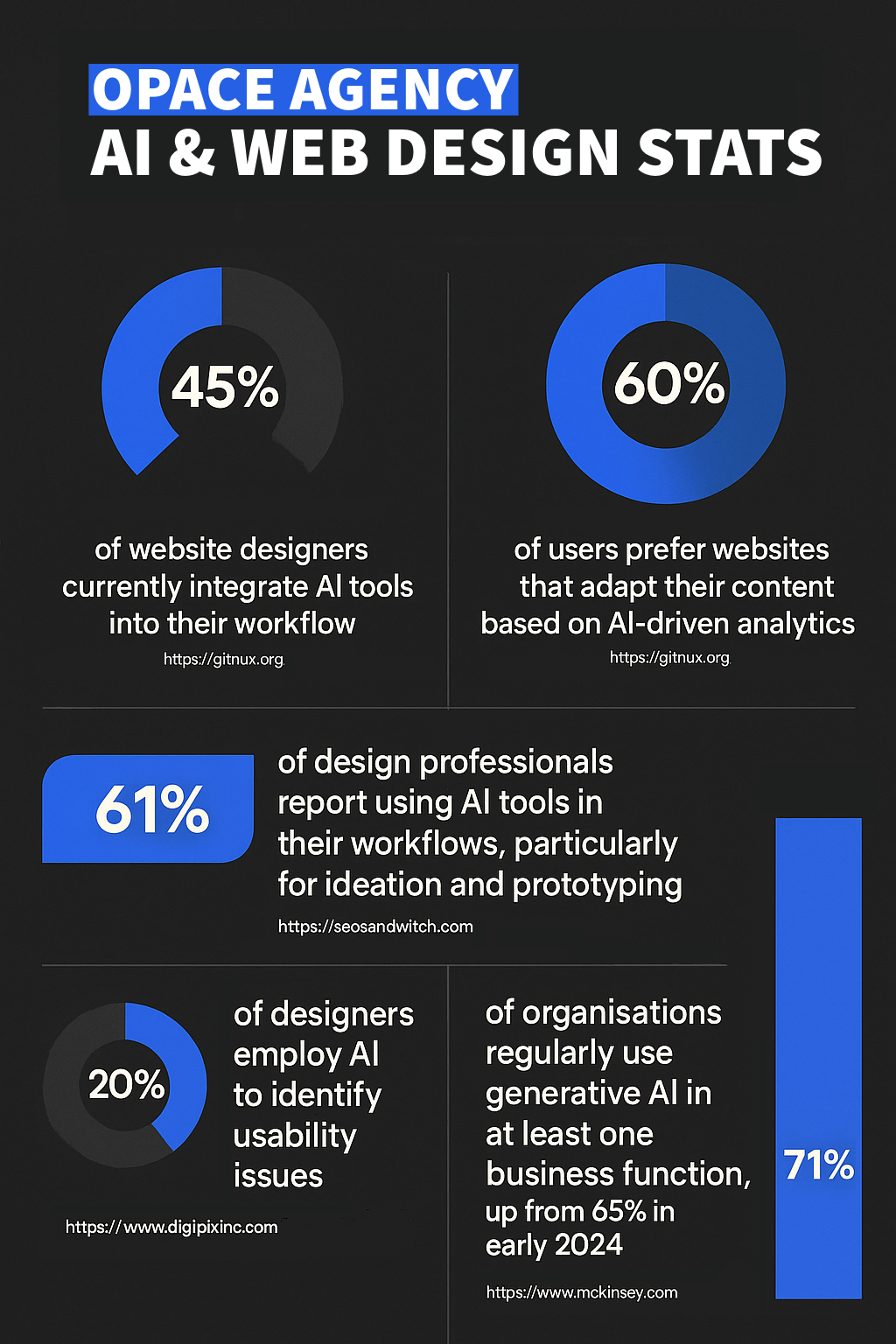
AI & web design infographic by Opace. Sources: mckinsey, digipixinc, seosandwitch, gitnux (1), gitnux (2)
Powerful personalisation combining AI, UBA, and IUI
The internet, and digital services in general, are becoming increasingly generic in the name of efficiency.
This is reflected in branding through minimalism and in workflows by stripping excess to the point of cold and mechanical-like experiences.
Personalisation often suffers due to sweeping changes applied to large numbers of users. AI can undermine personalisation when it churns out generic copy or stock-style imagery. But, when used properly with a web developer’s input steering the ship, AI has the potential to enhance personalisation in a big way.
All of these acronyms can be confusing, but don’t worry — we’ll go through it step-by-step! There’s somewhat of a powerful crossover with UBA (User Behaviour Analytics) and AI-powered tools.
When combined, UBA and AI tools can produce highly personalised sales pages for eCommerce websites. Enhancing personalisation keeps customers on your website longer, increases brand loyalty, and reduces drop-offs in your sales funnel.
Firstly, let’s have a quick refresher on what each of these acronyms stands for:
AI
Artificial Intelligence can be used as an umbrella term used to describe additional relevant technologies. AI aims to behave in a similar way to human intelligence, making nuanced and ever-changing decisions based on acquired data. Not to confuse you with more acronyms, but the current AI that most people are talking about (ChatGPT for example) is referred to as a Large Language Model (LLM).
For a deeper dive into the different forms of AI, including AGI (Artificial General Intelligence) and ASI (Artificial Super Intelligence), read our guide below:
To gauge whether the next model from OpenAI will be AGI, read on below regarding GPT-5:
What is GPT-5 from OpenAI: When Is It Coming, What Can We Expect & Will it be AGI?
UBA
User Behaviour Analytics focuses on pattern detection in user behaviour. With acquired data, UBA can produce highly personalised experiences for website users. UBA isn’t always linked to AI but is commonly used together to improve personalisation and the user experience.
IUI
Within the context of web design, IUI stands for Intelligent User Interface. Think of Netflix suggesting your favourite shows based on your history and viewing behaviour. IUIs can do more than adjust visual interfaces and are incredibly powerful.
AI Web Design: The Future, Creating Websites with Intelligent User Interfaces (IUI)
So, how can these different technologies can be leveraged, and how they are defined?
| Functionality | Is this UBA | Is this AI | Technology used |
| Track user input such as scrolling and clicks | ✔ | X | User Behaviour Analytics |
| Predicting user behaviour | ✔ | X | User Behaviour Analytics |
| Creating custom titles to match each customer | X | ✔ | Natural Language Processing (NLP) |
| Website layout changes based on the user | ✔ | ✔ | User Behaviour Analytics, Machine Learning, and IUI |
| Personalisation using sentiment analysis | X | ✔ | AI tools and Natural Language Processing |
How can AI negatively impact web development?
It’s not all positive though. AI will undoubtedly cause problems within the web design industry — particularly when integrated into website builders.
While AI integrated into services such as website builders isn’t inherently a bad thing, it has the potential to churn out generic websites that lack visual flair and unique features.
It’s a double-edged sword and ultimately comes down to budgets, expectations, how web designers leverage the tools available, and how website builders make use of AI.
Here are the ways AI can negatively impact web development and web design when not used correctly.
Plagiarism risk
As AI uses a huge amount of training data for its output, there is a potential for copyright works to be used to form your designs. This is still somewhat of a murky area regarding the law but it is still worth keeping in mind when using AI to create designs for your website.
Generic designs
Design and art are subjective and incredibly nuanced. Although there are design principles that can be harnessed to form visually attractive websites, there is a huge difference between human-made websites by web designers and web developers, and those that are AI-generated. AI may also neglect responsive web design, resulting in a bad user experience when using certain devices.
Weak brand identity
Web design isn’t just about producing appealing visuals; it’s also about incorporating your brand identity. When AI is used for design, a huge piece of the puzzle is absent from your website’s aesthetic. Having no brand identity included in your designs can reduce customer trust and increase the likelihood of competitors winning your clients.
Weak UX
User experience is something that AI alone struggles to understand as UX is a human consideration. Accessibility considerations such as colour choices, contrasts, and text size will be overlooked by AI unless prompted correctly. AI can assist UX designers with the user experience but can’t produce websites with optimal UX and responsive designs without specialist input from web designers and web development teams.
Security vulnerabilities
If AI tools are producing websites at scale, then there’s a risk that they will all be affected by any security vulnerabilities found in the code used. Once a security hole is detected in one website, it will be easy for other websites to be exploited immediately.
Negative sentiment around the use of AI on platforms such as Reddit is often correct at the core, but the sentiment seems to treat all forms of AI with a broad brush, criticising all AI-powered tools and labelling them as “low-quality” or “ethically questionable” decisions.
We feel that this isn’t painting the full picture with new and emerging AI-powered technologies and other emerging web technologies.

Is web design dead? A discussion about how AI should be used. Photo by Dylan Gillis on Unsplash
In many ways, this echoes the response that crypto and blockchain technology received. Many people seem to rule out crypto due to a few bad actors and NFT scams, ignoring the benefits of the entire ecosystem and decentralised technologies. With AI we seem to be encountering a similar thing, with a sweeping consensus that:
“AI is bad”
The role of web designers in the age of AI
Much like the role of car mechanics where a broader set of skills are developed to diagnose faults with vehicle computers and sensors, modern web designers will also need to embrace additional skills to harness AI tools. Modern websites can be complex projects that can’t be fulfilled by AI alone.
Prompt engineering
One example of new skills human designers and coders will need to embrace is prompt engineering.
Despite artificial intelligence being capable of some incredible things, you still need to communicate effectively with the relevant AI tools to get the most out of them. Just as mechanics had to interpret diagnostic codes from modern onboard computers, modern web designers will need to become proficient at prompt crafting. AI tools have their limitations; understanding these weaknesses can help you create a more accurate output.

The design process is crucial for any website. Photo by Davide Baraldi on Unsplash
As AI becomes even more sophisticated, it’s not unreasonable to envision a future where writing efficient prompts will be as important as writing efficient code for web developers and web designers. Prompt engineering combines technical understanding, linguistic nuance, and creativity to achieve the best results.
For more information on prompt engineering, you can find some of our previous guides on this topic below.
And
Quality control
As we hand over the reins to AI tools for select tasks, there is a crucial need for more quality controls than ever before.
Consider how, in their current form, tools such as Sora and DALL-E produce the desired image with an extra letter or number when working with writing. As impressive as the results are, they are far from perfect and require careful oversight when handling coding or designs for visual elements.
Many aspects of a web developer’s job will shift from creativity to curation — refining and improving AI assets to meet the needs of the client.
This process can be great for mockups and creative blueprints that can then be expanded by human web developers and web design teams.
Brand expression
We mentioned earlier the importance of limiting the use of AI for creativity without oversight, but this will still be a common way of using artificial intelligence as we move further into the future.
AI is weak at brand storytelling, or even aligning the visual appearance with a business’s brand identity and story, meaning web developers will require skills that manage this problem, removing generic templates in favour of creative concepts that better resonate with each client’s aesthetic.
Client communication
It is important that customers who request the use of AI to speed up time and save money, understand the limitations of AI tools. Web developers and web designers should also communicate with clients to educate and form a better understanding of what can be achieved through AI, and what still requires human oversight or exclusive control via web design teams.
Benefits of using a web design agency in a world obsessed with AI
While web design agencies and AI tools aren’t mutually exclusive, some individuals or small businesses on a budget will still choose AI tools and website builders exclusively.
Despite being time-saving and attractive options on paper, there are some clear limitations to consider.
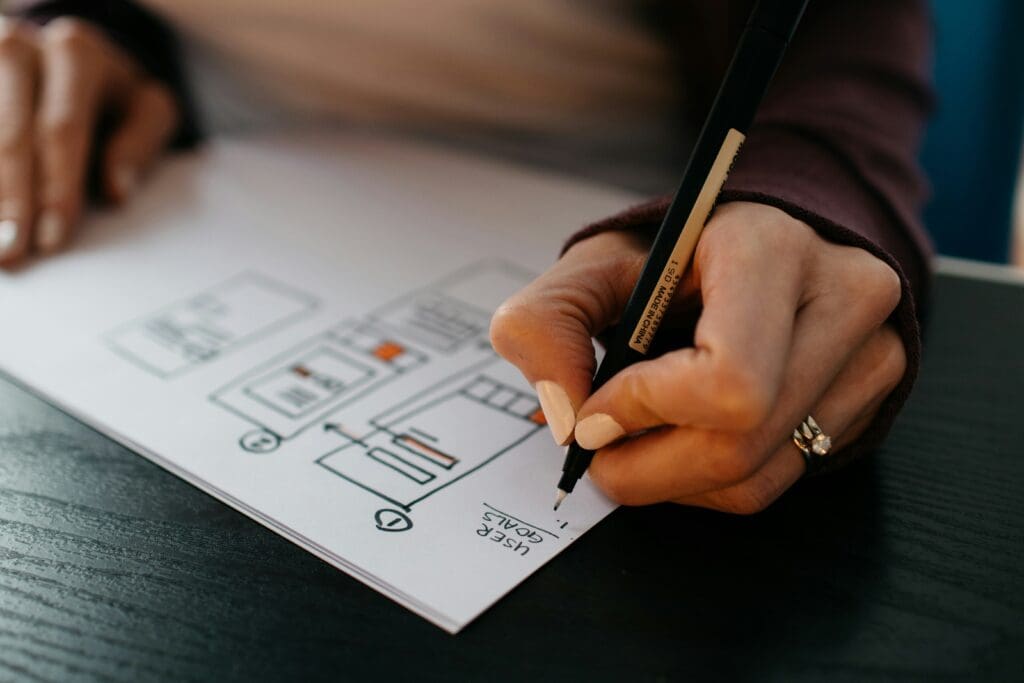
Hand-crafted websites still produce the best results. Photo by Kelly Sikkema on Unsplash
Using a web design agency that can produce a bespoke package (including intelligent use of AI) can save you money while delivering the best results — the best of both worlds.
Bespoke and tailored websites to fit client needs
A web design agency allows you to get precisely what you want in terms of design and functionality. When using AI tools exclusively, you will be limited by the output produced. Search engine optimisation (SEO) is also a crucial consideration that can be overlooked by AI tools and website builders.
Brand integration
Web design teams understand that brand is about more than colours and fonts. Conveying your brand’s message and story is impossible to produce with AI. Your website should be congruent with your marketing and messaging and requires an experienced web development team to implement. Seamless integration into mobile apps or existing web applications is also worth consideration.
Save money through correct use of AI tools
Clients can still save money through AI tools within agencies. The difference is that experienced web development teams can consult with businesses to highlight limitations and ensure AI tools don’t get in the way of the client’s (or designer’s) creative vision.
Full control over design and feature-set
As impressive as AI tools are, they are poor at fine-tuning features and designs during the web development process. If you need an element to be slightly larger or require specific functionality added, the output is nearly always inaccurate. Opting for a human web development team allows sketches and direct input from the client.
Tighter security
As noted previously, AI-made websites could potentially be vulnerable to attacks. If an exploit is found in other AI-made sites, the same technique could be used on similar websites using the same type of code. Using a web design agency with human web designers provides human oversight and ensures your website isn’t as susceptible to mass exploits. Also, AI tools may overlook compliance features such as GDPR or WCAG that could change depending on your business location.
Unmatched support
Having access to a human UK-based web development team helps streamline the support process if something goes wrong, or you need something changing. As noted, getting AI to make small changes can easily go wrong fast, even affecting other parts of your website.
Third-party integration
Your website will likely need to be integrated with third-party tools and APIs for payment processing, email marketing, and data synchronisation. As these services require API keys and precise integration, an experienced web development team is crucial.
Conclusion
Artificial intelligence is not killing web design; it’s changing it.
AI tools shouldn’t be relied upon to automate web development processes or produce generic assets; but used to find problem areas and enhance website features.
We must continue to apply critical thinking, considering the risks and rewards associated with AI tools. We need to understand how to harness the best of these technologies while leaving out the aspects that pose a threat to the quality of the output.
What are your thoughts about the death of web design due to AI? Do you consider AI to be a good thing or a bad thing for creatives and web designers? What do you see as being the future of web design? Please leave us a comment below — we would love to hear what you think about the effect AI is having on web development.


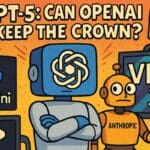
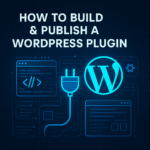


0 Comments